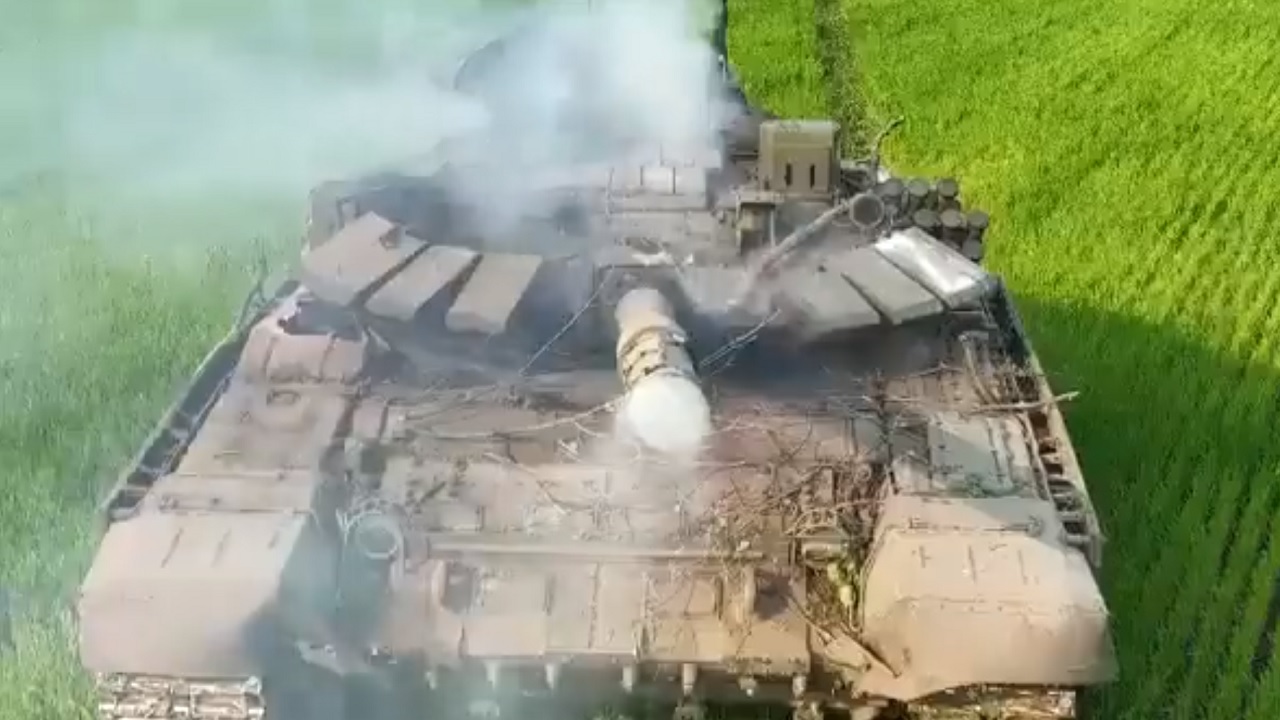It has been somewhat popular to predict the end of tank warfare and the rise of drone warfare in the modern era.
Yet, main battle tanks have played key roles for both sides in the conflict between Russia and Ukraine. Kyiv’s counteroffensive provides the latest indication that we should not count tanks out.
Last week, a Twitter account specializing in open-source intelligence published a shocking video of what appears to be a melted MBT in Ukraine.
The footage, posted by @front_ukrainian, shows the aftermath of an anti-tank attack.
Lingering flames can be seen rising above the armored vehicle’s turret in the 14-second video.
This is hardly the first video of a destroyed MBT to circulate widely, and it won’t be the last.
Putin Acknowledges Some Tank Losses
Although garnering exact figures is a challenge, not even Russian President Vladimir Putin can deny that his country’s tank fleet is in trouble. The Kremlin chief admitted that a significant number of tanks and other platforms including combat drones have been wiped out in Southern and Eastern Ukraine in the early weeks of Ukraine’s counteroffensive. According to Putin, Moscow had lost 54 MBTs by mid-June, and that number is probably a good deal higher now.
Both Kyiv and Moscow have strategic reasons to skew figures regarding the war, which makes the role of open-source intelligence trackers even more significant. For example, Oryx refuted a Russian claim last month that more than 160 Ukrainian MBTs had been destroyed in the first stages of the counteroffensive. According to Oryx, Kyiv might have lost 10 tanks in this time, a profoundly different figure. Kyiv has also exaggerated its enemy’s equipment losses, suggesting that Moscow has lost more than 4,000 tanks since the onset of the conflict. While Moscow has probably not lost quite that many tanks, its fleet is certainly depleted.
What’s Happening to Russia’s Tanks?
Even before the counteroffensive, Moscow’s MBT numbers were dangerously low. The UK-based International Institute for Strategic Studies estimated in February that Moscow had lost roughly half of its total fleet of modern tanks, including models such as the T-72.
Its inventory of T-80 tanks had likely been depleted by two-thirds. These figures are staggering, and the numbers have almost certainly grown over the last five months. Although many of these MBT losses were due to anti-tank attacks, scores of Russian tanks have been captured by Ukrainian soldiers or left behind by Russian troops.
In the early months of the war, Moscow sent many tanks to the frontlines with crews that were simply not prepared, trained, or guided properly. Some tanks were sent without enough fuel to reach their intended destinations, while other crews were not given the tools or training needed to maintain their MBTs.
On top of this, Ukraine has been firing a slew of advanced Western anti-tank weapons, including HIMARS and the Javelin, that have proven adept at killing Russian tanks.
As American M1 Abrams, British Challengers and more German Leopard 2s join Kyiv’s counteroffensive on the frontlines, Moscow will only have its dwindling fleet of antiquated Soviet MBTs to lean on.
⚡️????????Ukrainian military examines the turret of a destroyed ????????Russian tank. pic.twitter.com/8wRl8hAvr6
— ????????Ukrainian Front (@front_ukrainian) July 14, 2023
Maya Carlin, a Senior Editor for 19FortyFive, is an analyst with the Center for Security Policy and a former Anna Sobol Levy Fellow at IDC Herzliya in Israel. She has by-lines in many publications, including The National Interest, Jerusalem Post, and Times of Israel. You can follow her on Twitter: @MayaCarlin.

